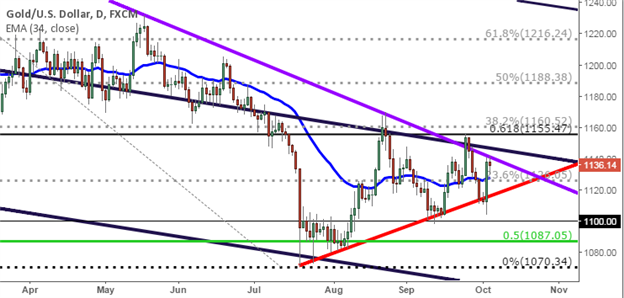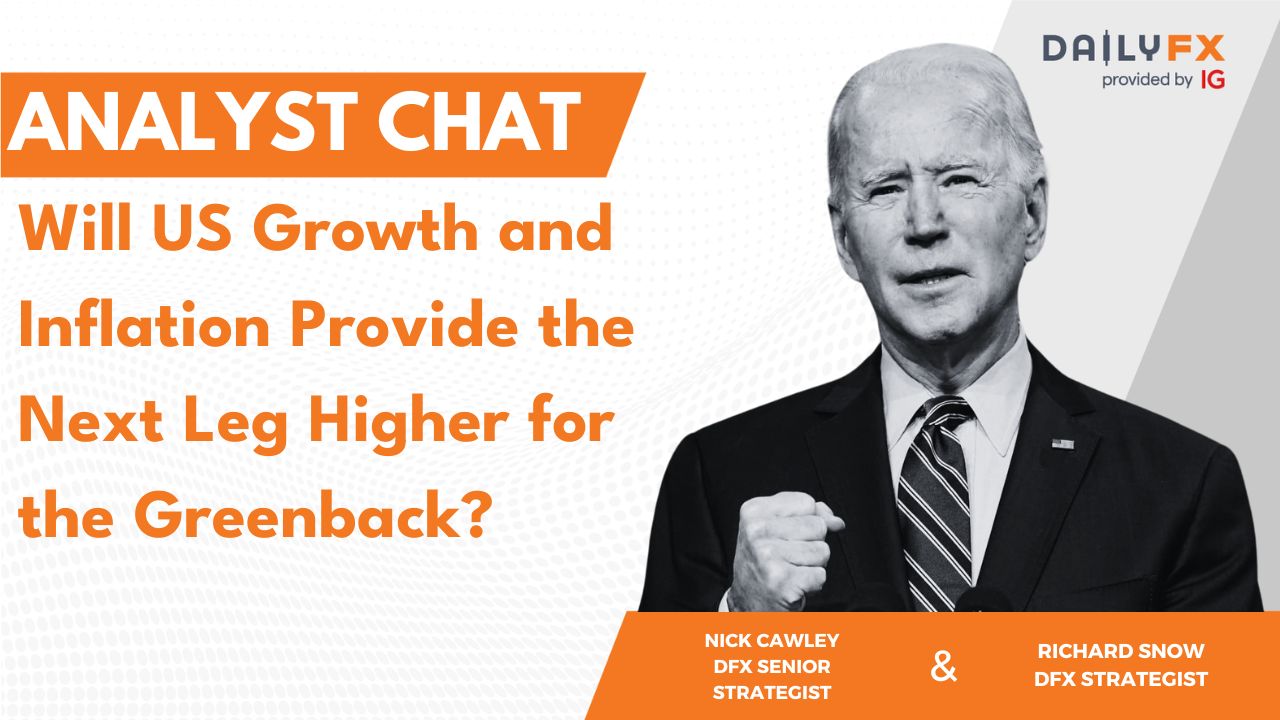To receive James Stanley’s Analysis directly via email, please sign up here.
Talking Points:
- Gold Technical Strategy: Flat
- Gold has continued to price higher, but has run into multiple points of resistance.
- Continued resistance within the $1,150-$1,160 range could open the door for future short positions.
One of the primary beneficiaries of the ‘bad is good’ trend sweeping through global markets right now has been Gold. As the Federal Reserve walked close and closer to a rate hike, Gold continued to sell-off as it became clear that the largest national Central Bank in the world was no longer going to be providing stimulus to global markets. But as data has printed more and more poorly, the idea of higher rates out of the US has become more and more outlandish; capitulating with last week’s NFP report that printed a terrible series of data points and has helped to all but rule out an October rate hike and probably even December (at least according to futures markets and most economists).
This has helped Gold mightily, as prices have staged a strong turn-around along with other risk-assets as this apparent pricing-out of a 2015 rate-hike created a ‘risk-on’ rally reminiscent of 2011. While the immediate response to this abysmal NFP-print was risk-aversion, the quick reversal highlights the ‘bad news is good for risk’ environment that we’ve all become accustomed to over the past five years. Under this premise, bad data means higher probabilities for loose monetary policy out of Central Banks; which should be a strong factor to the bull-side of Gold. There’s just one problem: We don’t know that the Fed is going to back off of a 2015 rate hike just yet… and this could be one reason that Gold is continuing to catch resistance after Friday’s brisk turn-around that saw Gold move up to $1,140 from the lows of sub-$1,105.
For now, the setup remains congested: But there are numerous ways to play either side of the market in Gold right now. We’re currently catching resistance off of the 2015 down-ward sloping trend-line (shown in purple on the below chart). This would peg resistance in the $1,140 area, and this could be the basis for a short position with a stop above the highs at $1,142 with targets cast towards $1,126 (23.6% Fibonacci retracement of the most recent major move – taking the 2015 high and low), $1,120 (projected trend-line shown in red), $1,100 (minor psychological level, and previous price action swing-low), and lastly $1,087.40 (50% Fib retracement of the ‘big picture’ move – taking the 1999 low to the 2011 high).
On the long side, triggering could be more difficult given the outsized-movement off of support. Frankly, a $30-$35 stop could be difficult to justify given nearby resistance levels. Traders could wait for the $1,140 area to clear, and then look to get long with a stop below support (which was old resistance), looking for prices to move to the familiar $1,155 level (61.8% of the secondary move – taking the 2008 low to the 2011 high), $1,160 (38.2% retracement of the most recent major move), $1,188 (61.8% of the most recent major move), and then $1,200 (minor psychological level).

--- Written by James Stanley, Analyst for DailyFX.com
To receive James Stanley’s analysis directly via email, please SIGN UP HERE
Contact and follow James on Twitter: @JStanleyFX







